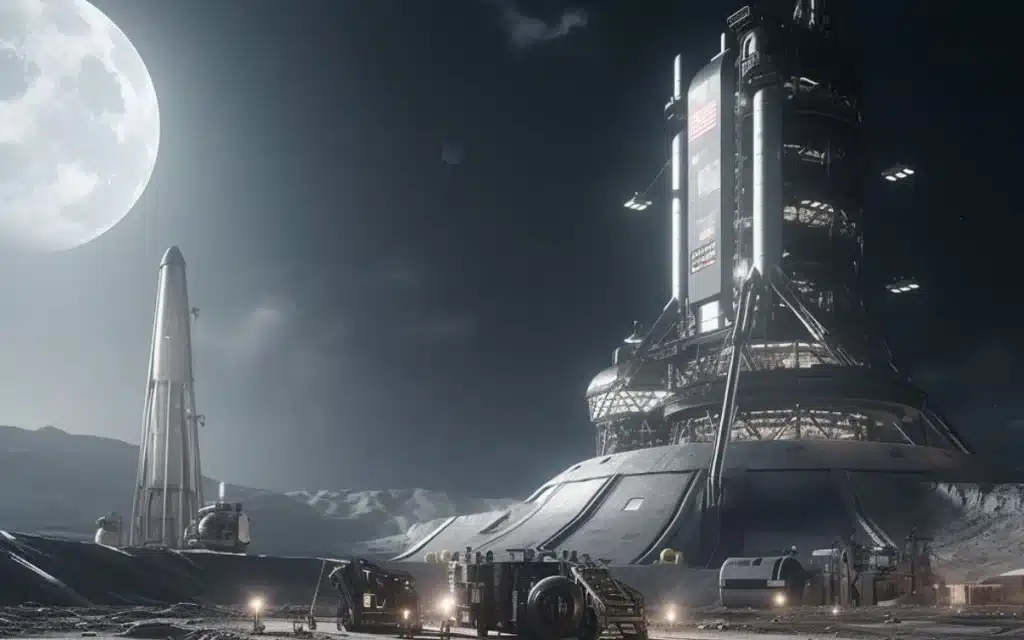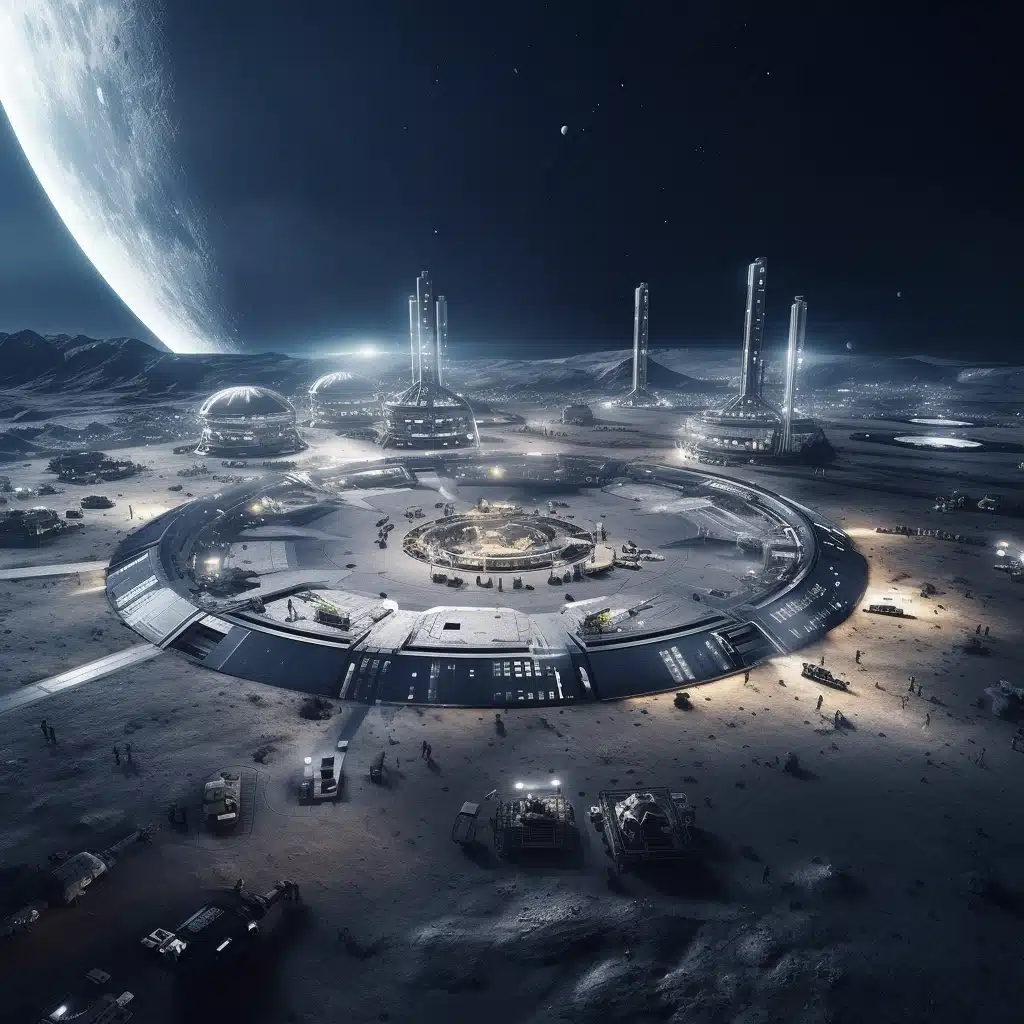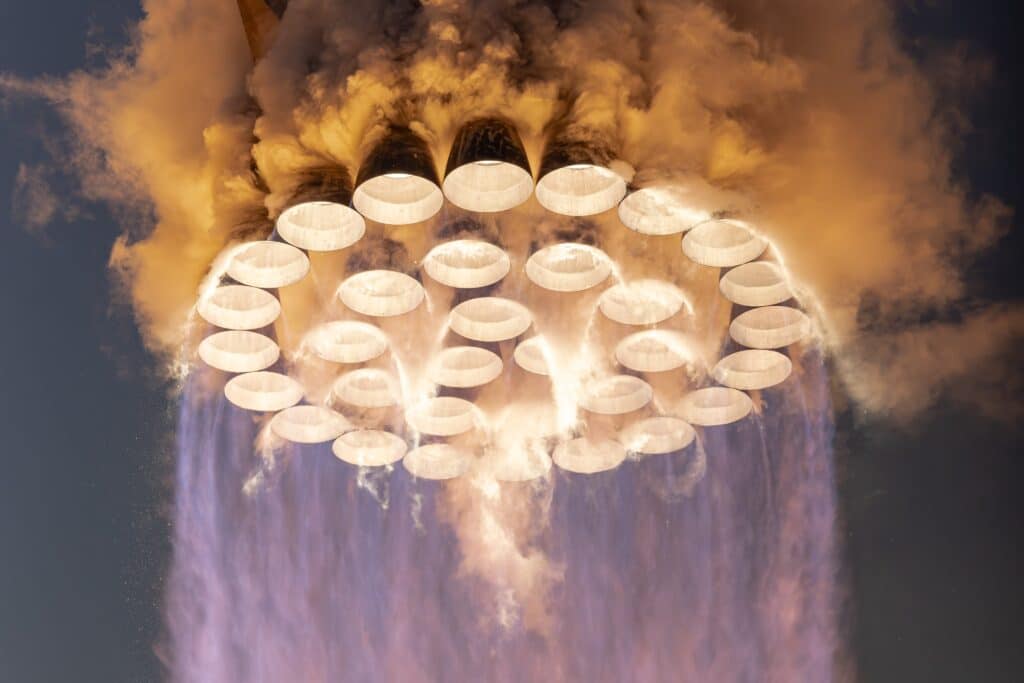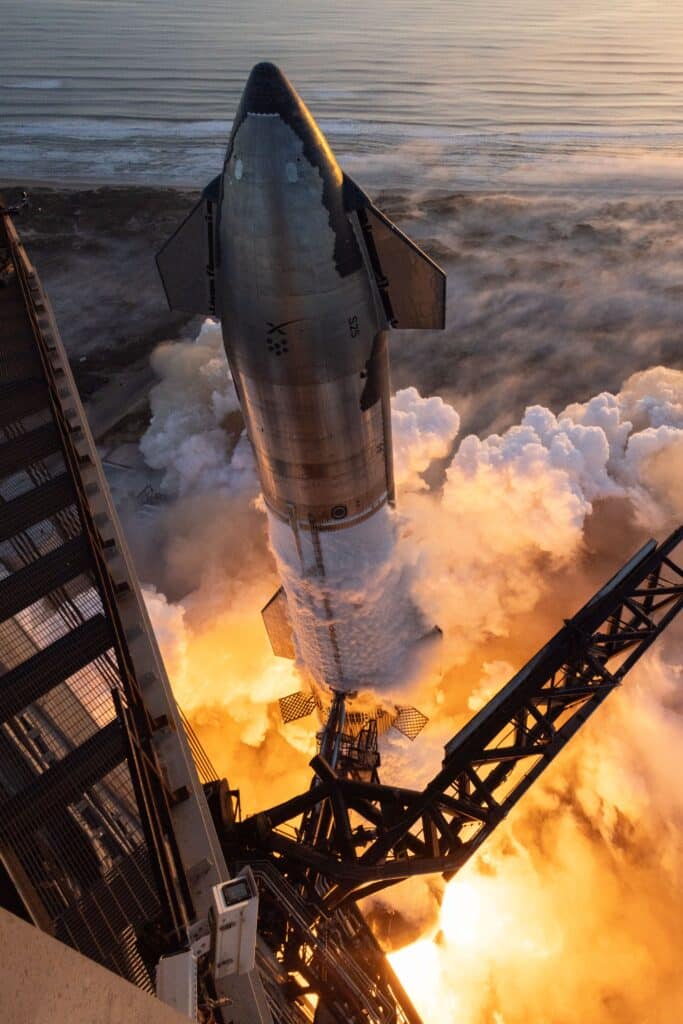NASA and SpaceX combining to build first Moon base
- Mankind is returning to the Moon and SpaceX is one of NASA’s space agency partners
- Their lunar Starship vehicle will allow astronauts to touch down on the Moon’s surface
- It’s the first time humans have been to the lunar surface in over 50 years
Published on Feb 02, 2024 at 9:36 PM (UTC+4)
by Amelia Jean Hershman-Jones
Last updated on Feb 05, 2024 at 7:57 PM (UTC+4)
Edited by
Adam Gray
Human beings are going to return to the Moon this decade – and Elon Musk’s SpaceX is going to help NASA out as a partner space agency.
SpaceX are tasked with delivering the lunar Starship vehicle that will allow astronauts to touch down on the Moon’s surface for the first time in over 50 years.
SpaceX is essentially functioning as a NASA contractor per The Tesla Space.

READ MORE! Trailblazing spacecraft reaches moon and sends back images
They are set to deliver the biggest most powerful and arguably most important part of the entire Moon landing Mission: the lunar Starship, Human Landing System (HLS).
The vehicle will ferry the crew down from Orion to the surface and send them back up again.
During the Apollo program, NASA was able to fit a small lunar lander into the same rocket that launched their Command Module that was flown manually.
This doesn’t work for the modern Artemis program.
For one, while the Space Launch System (SLS) has more thrust at liftoff than Saturn V, it also has a lower weight capacity.

The SLS doesn’t offer the same lift capability as the old Saturn V – 27 tons versus 43 metric tons.
Plus, NASA no longer wants to want to rely on a flimsy Moonlander.
The idea is to establish a strong and permanent human presence on the Moon.
To do that, a sturdy vehicle is needed.
It will deliver heavy infrastructure as well as supporting a crew for their week-long excursions to the lunar surface.

This is where the Artemis project becomes a tale of two massive rockets.
SpaceX won the first Human Landing System (HLS) contract from NASA because their vehicle was the biggest and most powerful option.
Starship flew for the first time in April 2023 and then it exploded – but Elon Musk is the best at learning from his mistakes.
The lunar Starship that is going to fly to the Moon will be pretty similar to the designs that we’ve seen being tested previously at Boca Chica.
However, without re-entering Earth’s atmosphere, it won’t require the black heat shield or the big Arrow flaps at the nose and tail of the upper stage.
With no mechazilla towers waiting on the Moon, the lunar Starship needs a wide stable footprint to land on rather than spindly legs.

Landing thrusters are going to be necessary to steer the ship on its descent to the lunar surface.
There also needs to be a new way to steer landing without arrow flaps that use air and raptor engines that are too powerful for the gravity – or lack thereof – on the moon.
Additionally, SpaceX will require an elevator system to help the crew travel the 30-odd meters to the ground, with crew quarters above the cargo hold.
Lastly, they need a small docking port up in the tip of the nose comb, something that SpaceX that the Orion crew will link up with the Starship and transfer between vehicles.
It’s a lot to do within two years.
The starship super heavy booster offers up to twice the thrust of the old Saturn V and it can deliver twice the payload to the Moon: 100 metric tons.
That comes inside a gigantic 9-meter-wide by 50-meter-tall stainless steel spaceship.
The major caveat here is that, using only the fuel that it launches with, Starship cannot go beyond low earth orbit.
By the time Starship gets just a couple hundred miles above the Earth’s surface it runs out of gas.
So in order to go any higher – like say to the Moon – Starship needs to refuel.


Before the lunar Starship can be verified for human space flight, SpaceX will need to perform one un-crewed demonstration landing on the Moon prior to Artemis 3.
Meanwhile over at NASA, they have already flown one uncrewed Artemis Mission with the SLS and Orion to verify the flight hardware.
NASA is clear for the first crewed Artemis launch in 2024.
The round trip will take four astronauts for a spin in the Orion spacecraft at a cost of $4 billion.
They’ll circle the Moon and return home for a splashdown.
DISCOVER SBX CARS: The global premium car auction platform powered by Supercar Blondie

All Supercar Blondie contributors undergo editorial review and fact-checking to ensure accuracy and authority in automotive journalism. After gaining her BA Hons in French and English at the University of Nottingham, Amelia embarked on a vocational diploma from the National Council for the Training of Journalists (NCTJ). This led to numerous opportunities, from interning at Vogue to being on the small team that launched Women’s Health magazine in the UK, which was named the PPA Consumer magazine of the year for three years running. As Health, Beauty and Fitness editor, Amelia personally received a Johnson & Johnson Award and was shortlisted for both PPA and BSME titles. Since then, Amelia has created content for numerous titles and brands, including the Telegraph, 111 Skin, Waitrose, Red magazine, Stylist, and Elle, as well as being Head of Content at Vitality and Editor in Chief at INLondon magazine. “My superpower is translating technical jargon about the mechanical workings of a supercar into a relatable story you’ll want to share with your friends after you’ve read it.” After joining the SB Media family as a senior journalist in September of 2023, Amelia’s role has evolved to see her heading up the SEO output of the editorial team. From researching the most ‘Google-able’ key terms to producing evergreen content - it’s been a time of hard work, growth, and success for the editorial team and the Supercar Blondie website. “I like to think of myself as a ‘method journalist’. In other words: I live and breathe whatever I am writing about. When writing about fitness, I trained as a personal trainer, and as a beauty editor, I completed an ‘expert’ in scent diploma with the Fragrance Foundation. “During my tenure at Supercar Blondie, however, I did something I never thought possible: I passed my driving test at the age of 36. One day I’d love to train as a mechanic to better understand what happens under the hood, too. “My sweet spot is providing readers with a ‘takeaway’ (read: something new they didn’t know before) after reading every one of my stories. While I don’t claim to be an expert in the automotive world, I know the experts and bodies in the field to rely on to provide our readers with an informative and thought-provoking story every time they visit the site.”




